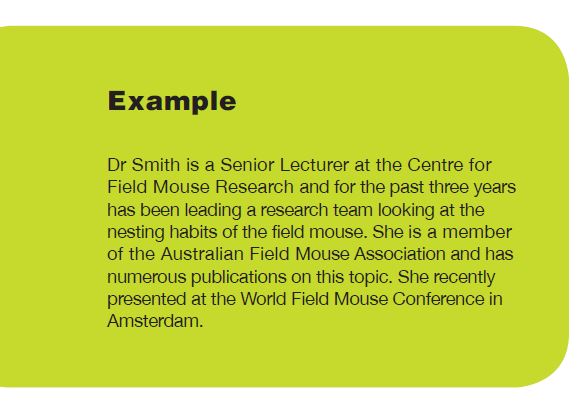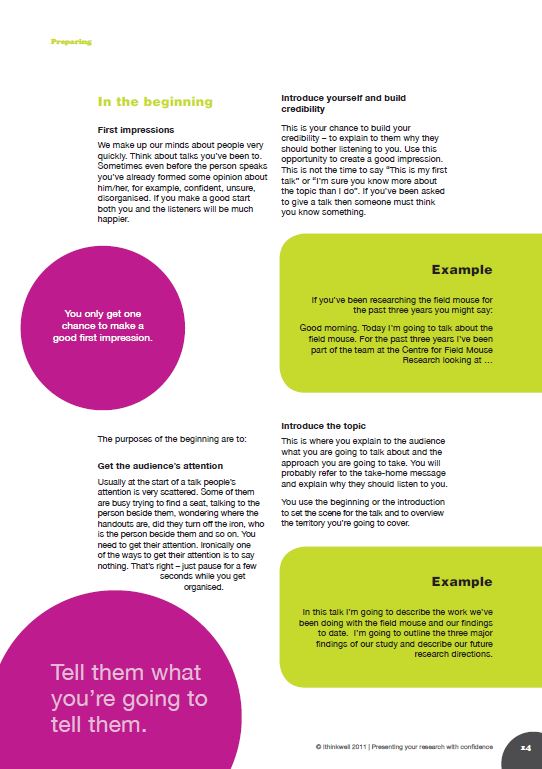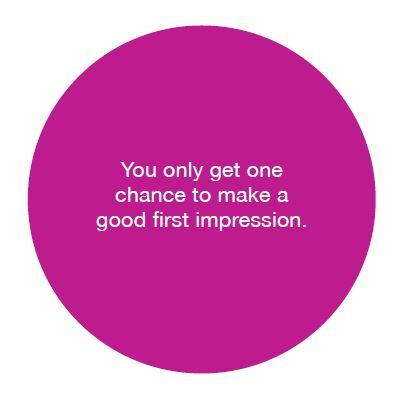We make up our minds about people very quickly. Think about talks you’ve been to. Sometimes even before the person speaks you’ve already formed some opinion about him/her, for example, confident, unsure, dis-organised. If you make a good start both you and the listeners will be much happier.
The purposes of the beginning are to:
Get the audience’s attention
Usually at the start of a talk people’s attention is very scattered. Some of them are busy trying to find a seat, talking to the person beside them, wondering where the handouts are, did they turn off the iron, who is the person beside them and so on. You need to get their attention. Ironically one of the ways to get their attention is to say nothing. That’s right – just pause for a few seconds while you get organised.
Introduce yourself and build credibility
This is your chance to build your credibility – to explain to them why they should bother listening to you. Use this opportunity to create a good impression. This is not the time to say “This is my first talk” or “I’m sure you know more about the topic than I do”. If you’ve been asked to give a talk then someone must think you know something.
Introduce the topic
This is where you explain to the audience what you are going to talk about and the approach you are going to take. You will probably refer to the take-home message and explain why they should listen to you. You use the beginning or the introduction to set the scene for the talk and to overview the territory you’re going to cover.
Note: if others introduce you
 At many conferences there will be a Master of Ceremonies (MC) or a convenor who will introduce the speakers. I’ve done this job and part of it involves searching for interesting things to say about people. Usually you go to the abstract or whatever information has been provided. So it’s important that you give the MC some good information. Think about how you’d like them to introduce you. Write it out and give it to the MC beforehand.
At many conferences there will be a Master of Ceremonies (MC) or a convenor who will introduce the speakers. I’ve done this job and part of it involves searching for interesting things to say about people. Usually you go to the abstract or whatever information has been provided. So it’s important that you give the MC some good information. Think about how you’d like them to introduce you. Write it out and give it to the MC beforehand.
Talking to experts
You might be anxious because you will be presenting to a group of experts who know more about the topic than you do. In this case you might acknowledge that by saying:
“I know you are very familiar with the field mouse. What I’m going to do in this talk is provide my perspective on …”
or
“I’m going to describe the work my group have been doing …”
This way you are not challenging the experts, simply reporting what you have found. They might disagree with your approach but it’s harder to disagree with what you’ve found.
How to start
As I’ve said it’s important to make a good start so here are some techniques to use.
Opening phrases/examples
- Good morning.
- Thank you for coming along.
- I have been studying the field mouse for X years.
- Today I’m going to be talking about …
- In this talk I’d like to tell you about …
- As X has said, for the past three years my research group has been …
Opening stories
You could start your talk by telling a relevant story.
For example: Today I’m going to talk about the field mouse. I’ll start by telling you a story of what happened on a field trip recently …
Clearly the story needs to be relevant!
Case studies
You could start by using a case study from the data to highlight a point.
For example: I’m going to be talking about X. To illustrate let me describe the case of …
Opening questions
A question can be a good way of getting attention at the beginning of your talk.
For example: Have you ever wondered what field mice get up to after dark?
Does anyone know how many field mice there are in Australia?
A famous quote
You could use a famous quotation or comment if it is relevant to your topic.
Cartoons or images
You can use a cartoon or image as a way of opening your talk. Just find one that has some relevance to your topic.
An unusual fact or statement
Not many people know that there are more field mice in Australia than people. (This fact may not be true. I’m not a field mouse expert!)
Something topical
There may be something topical in your field or in current affairs at the time. What is on the front page of the newspaper? Is there some way you can link this to your topic?
Humour
The problem with using humour is that you need to be very good at it. Not everyone can tell good jokes or stories. Remember that some people spend years training to be professional comedians and even then some of them are not very good! People have different senses of humour. So be careful about using humour. If you do tell a joke you must memorise it and practise it. Jokes depend on timing and remembering the punchline!
Overlearn your opening lines
You want to make a good first impression but, of course, those first few moments are when you are likely to be at your most anxious. To deal with this I suggest overlearning your opening:
- learn your opening few lines by heart
- practise it so that you can do it even when your heart is pounding
- have it written out word for word so that if you go blank there’s a safety net
Once the opening lines are over, most people settle down from hysteria to normal levels of panic!
Extract from Presenting your Research with Confidence, Hugh Kearns.


